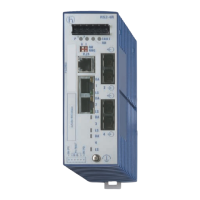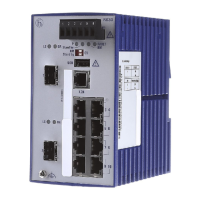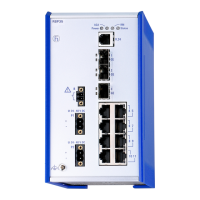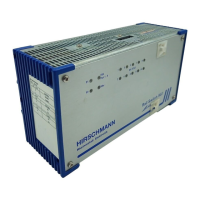Glossary
555
CLI L2P
Release
7.0
05/2011
P
PDU. See “Protocol Data Unit” on
page 555.
PHY. The OSI Physical Layer: The
physical layer provides for
transmission of cells over a physical
medium connecting two ATM
devices. This physical layer is
comprised of two sublayers: the
Physical Medium Dependent (PMD)
sublayer, and the Transmission
Convergence (TC) sublayer.
PMC. Packet Mode Channel.
Port Mirroring. Also known as a
roving analysis port. This is a
method of monitoring network traffic
that forwards a copy of each
incoming and outgoing packet from
one port of a network switch to
another port where the packet can
be studied. A network administrator
uses port mirroring as a diagnostic
tool or debugging feature, especially
when fending off an attack. It
enables the administrator to keep
close track of switch performance
and alter it if necessary. Port
mirroring can be managed locally or
remotely. An administrator
configures port mirroring by
assigning a port from which to copy
all packets and another port where
those packets will be sent. A packet
bound for or heading away from the
first port will be forwarded onto the
second port as well. The
administrator places a protocol
analyzer on the port receiving the
mirrored data to monitor each
segment separately. The analyzer
captures and evaluates the data
without affecting the client on the
original port. The monitor port may
be a port on the same SwitchModule
with an attached RMON probe, a
port on a different SwitchModule in
the same hub, or the SwitchModule
processor. Port mirroring can
consume significant CPU resources
while active. Better choices for long-
term monitoring may include a
passive tap like an optical probe or
an Ethernet repeater.
Protocol Data Unit. PDU is a
packet of data passed across a
network. The term implies a specific
layer of the OSI model and a specific
protocol.
Q
QoS. See “Quality of Service” on
page 555.
Quality of Service. QoS is a
networking term that specifies a
guaranteed level of throughput.
Throughput is the amount of data
transferred from one device to
another or processed in a specified
amount of time - typically,
throughputs are measured in bytes
per second (Bps).
